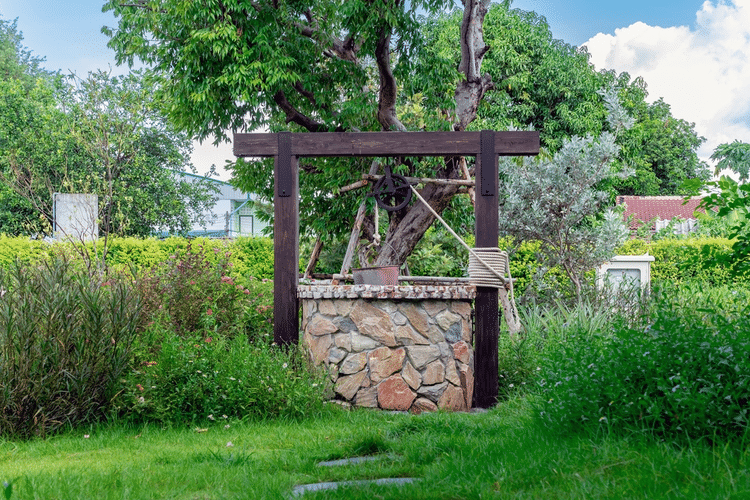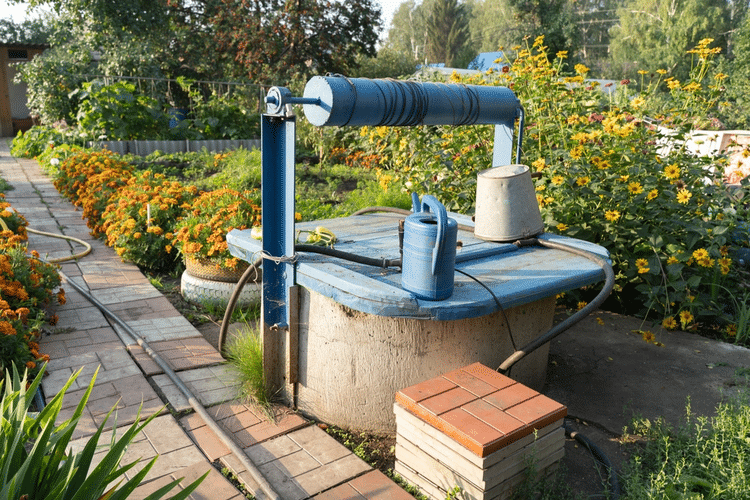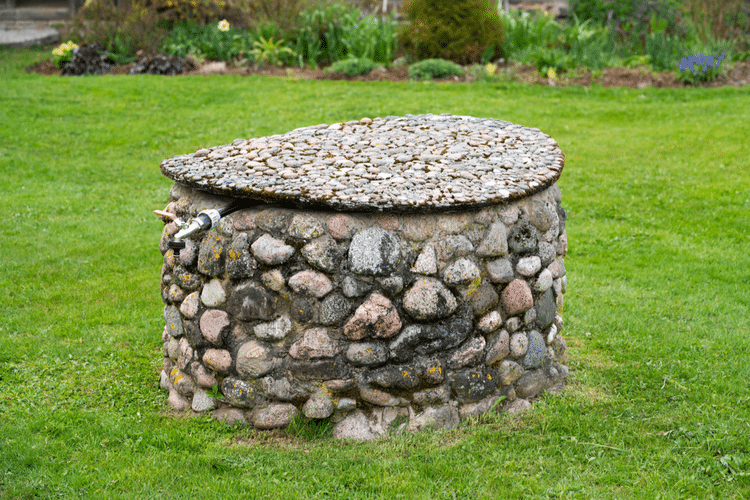In the United States, Private water sources such as wells are the responsibility of their owners. However, this doesn’t mean there are no regulations to what you can do with the wells. Infact, you’re required to inform authorities when drilling a new well and closing up or reviving an old one.
Therefore, it’s important to be well-versed in repurposing private water sources for safety and to get the most out of your resources.
How to Find a Well on Your Property
There are a few common indicators that could signal the existence of an old and unused well. It’s best practice to look out for any wells that have gone out of service.

First, obtain documentation regarding the use of the land prior to current ownership, which would inform you on water sources and their use:
- Old maps
- Property blueprints or local well-logs
- Records about the current water utility
Depressions or Pits in The Ground
An investigation of the property may uncover depressions or pits in the ground that may be evidence of a well.
A minor excavation of the area around the depression can reveal lining materials, such as metal plates, concrete, or wood, that prove the evidence of a well or water connection.
Small Utility Buildings or Mills
Structures like utility buildings or mills may be linked to water sources. Check the basements of these structures for pipes, drains, or manhole covers.
You may have to hire professionals to ensure a thorough inspection and compliance with local ordinances that vary depending on the state. That’s especially the case if drilling and digging must be done to uncover where these pipes or drains lead.
Otherwise Inexplicable Pipes
Additionally, inspecting mysterious pipes may lead to an undiscovered or obsolete well. If there is a pipe emerging from the land with no fathomable purpose, call a professional to learn whether it connects to a water source. Alternatively, some regions have agencies that can identify mysterious pipelines for you.
How Long Can a Well Sit Unused?
How long a well can sit unused depends on its construction and the area’s characteristics. Regardless, wells that have sat dormant for more than a year should be inspected and treated if the condition demands.

Certain metals erode faster, contaminate the supply, and make the well structurally unstable. Even small metal bolts can leach harmful chemicals over time.
Moreover, a well can’t simply be covered over at the top and must be sealed completely. If not adequately sealed, old water wells start to collect debris and let in the runoff.
If you have just discovered a well and don’t know its exact age, it’s best to proceed with caution. Hire an inspector or contractor as wells can become the breeding ground of many dangerous contaminants like heavy metals and bacteria after a relatively short period of inactivity.
Lastly, remember that a remote or unused well can easily fall into disrepair. Any well found should be clearly marked and documented to ensure that it is included in future planning and maintenance.
What Happens to an Unused Well?
Unused wells can be contaminated, or they might collapse and cause people to fall into it. If it has collapsed in on itself, this may be dangerous in its own right and can lead to water contamination.
Contamination can also occur if the well is buried but not adequately sealed. Asides from the immediate physical danger, this could potentially affect the water table, presenting problems for the entire community.
Unfortunately, it’s common for someone to fall into forgotten wells. Therefore, it’s vital to mitigate this risk with inspections, signs, and proper coverings.
Can a Water Well Collapse?
A water well, functional or not, can collapse due to poor maintenance or natural disaster. If you’re concerned that your water well may collapse, get a professional to inspect the area.
A collapse can also occur due to construction on a property close to the well. If there are any plans to alter the landscape, such as adding a structure, ensure that all parties involved are aware of the well.
Is it Bad For a Well to Not Be Used?
An unused well is vulnerable to contamination and collapse. Wells that are still in operation are safer for passers-by and pose less of a threat to the water table.
How Do You Tell If a Well is Bad?
Local health departments usually offer water testing, though they may charge a fee and may not be able to process your request as quickly as you want.
There are also state-certified independent labs you can send water samples to. They can be more expensive, but they generally can operate more quickly.
Note that water left to sit for a year or more should not be consumed without inspection. Well water is typically stagnant when not in use and can foster algae, bacteria, and other hazards.
What to Do with an Old Water Well
If you don’t intend to use the well, it’s vital and often legally required to seal it. However, it’s something a professional contractor should do, as it’s the law in most states.

It may also be necessary to notify a local branch of the Environmental Protection Agency regarding the sealed well.
Also, it’s a legal requirement in most states for owners to inform the local government about the presence of an old well before selling a property.
How to Revive an Old Well
If you wish to use an old well, you need to clean the well, test the groundwater, and fix any structural issues. Some of these can be completed by the property owners, but most will require certified professional contractors due to either state laws or the complexity of the task.
Minor structural concerns, such as small cracks, can often be repaired personally. You can also remove debris and foliage on your own. Additionally, you may test the water by sending a sample to a certified lab and submitting the results to the relevant state department afterward.
However, as per the law in many states, contractors should handle significant structural changes, drills, and the construction of the wellhead. Not only do they possess the equipment and experience for these specialized tasks, but also, they know the local regulations placed on well operation and construction.
Depending on the state, these regulations might pertain to the thickness of the well casing and the material it’s made of, static water level, and well depth.
Note that an old well may not be suitable for reuse if the water has run out, the water level isn’t in compliance with the state laws, or contamination is detected. Gasoline, lead, or fertilizers make the water extremely difficult to clean, even if other chemicals or bacteria can be killed or removed.
Moreover, bear in mind that, depending on the state of the well and the material you want to use, the revival process might cost as much as constructing a new well. So, you may expect an expenditure range of $3,000 – $15,000.
Conclusion
There might already be unused wells in the property you just bought. To revive an old and obsolete well, you should have the water tested by the local health department or state-certified independent labs.
If the water is irreversibly contaminated, then you have no chance but to seal it. The sealing process should be conducted by certified contractors.
If the well isn’t contaminated and doesn’t show any signs of structural damage, you might be able to revive it yourself. However, hiring professionals to restore an old well is a good idea since they can check it for structural damage to prevent future issues.